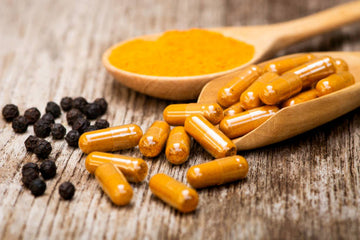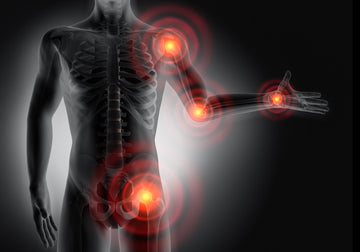For many people of East Asian descent, what's sometimes called "Asian glow" or "Asian flush" isn't just a random reaction to alcohol - it's a documented genetic trait that affects up to half of the East Asian population.
This distinctive response to alcohol occurs due to a natural variation in how certain people's bodies process alcohol, causing their face and sometimes their entire body to turn noticeably red after just one drink. While some may view this as an inconvenience during social situations, it's actually an important biological signal that deserves attention and understanding.
This genetic characteristic isn't a curse or a flaw - it's a natural variation in human biology that affects millions of people worldwide, and understanding it better can help those affected make informed decisions about their health and wellbeing.
What is asian glow?
The alcohol flush reaction, commonly known as "Asian glow" or "Asian flush," is a condition where people experience significant redness in their face, neck, and sometimes entire body after consuming alcoholic beverages.
The science behind asian glow
This reaction happens because of a specific genetic variation that affects how the body metabolizes alcohol. When someone drinks alcohol, their body breaks it down in two steps: first, an enzyme called alcohol dehydrogenase (ADH) converts alcohol into acetaldehyde, a toxic substance; then, another enzyme called aldehyde dehydrogenase 2 (ALDH2) breaks down this toxin into harmless compounds.
People who experience Asian flush have a less efficient version of the ALDH2 enzyme, causing acetaldehyde to build up in their system. This buildup triggers the release of histamines, leading to the characteristic redness along with other potential symptoms like headaches, nausea, and rapid heartbeat.
Think of it like a two-person assembly line in your body, but one worker isn't quite keeping up with the other. The first worker (alcohol dehydrogenase or ADH enzyme) efficiently breaks down alcohol into acetaldehyde, a toxic substance. However, the second worker (aldehyde dehydrogenase 2 or ALDH2 enzyme) has a genetic variant that makes them work more slowly, causing that toxic acetaldehyde to pile up in your system.
This genetic variation is particularly common in East Asian populations, affecting approximately 30-50% of Chinese, Japanese, and Korean individuals. The buildup of acetaldehyde does more than just cause redness - it triggers a cascade of reactions in your body. Your blood vessels dilate, causing that characteristic flushing of the face and neck. Your heart rate might increase, and you could experience other symptoms like headaches or nausea.
Health implications
While many people focus on the visible redness of Asian flush reaction, the health implications deserve serious attention. The same genetic variation that causes your face to turn red can have significant short-term and long-term effects on your health.
1. Immediate health effects
When acetaldehyde builds up in your system, it doesn't just cause facial flushing. Your body responds with a range of immediate symptoms that can include:
-
Rapid or irregular heartbeat
-
Headaches and dizziness
-
Nausea and digestive discomfort
-
Difficulty breathing or worsened asthma symptoms
-
Low blood pressure
-
General physical discomfort
2. Long-term health considerations
More concerning are the long-term health risks. People who experience Asian flush reaction and continue to drink alcohol regularly face increased health risks:
-
Higher risk of esophageal cancer - up to 4-8 times greater for those who drink regularly despite having the ALDH2 deficiency
-
Potential increased risk of other alcohol-related cancers
-
Recent studies suggest possible connections to increased risk of Alzheimer's disease when combining alcohol consumption with this genetic variation
Importantly, using medications to mask the flush reaction (like antihistamines) doesn't protect against these health risks. In fact, masking the symptoms while continuing to drink can be particularly dangerous because it allows more alcohol consumption while the toxic acetaldehyde continues to accumulate in your body.
This doesn't mean you can never enjoy a social drink, but it does mean you should be aware of these risks and make informed decisions about your alcohol consumption. Understanding these health implications can help you make better choices about how to manage social situations where alcohol is present and when to seek alternatives.
Treatment options and solutions
Understanding how to manage Asian flush requires balancing social comfort with health considerations. Let's explore both traditional approaches and safer alternatives for dealing with this condition.
Common but potentially risky methods
Many people turn to over-the-counter antihistamines like Zantac or Pepcid to reduce flushing symptoms. However, according to USC researchers, this practice can be dangerous because:
-
It masks important warning signals from your body
-
Allows people to drink more than they safely should
-
Doesn't prevent the toxic buildup of acetaldehyde
-
May increase risk of alcohol-related cancers
-
Could delay seeking medical attention when needed
So what is a safer management strategies
Before drinking:
-
Stay well hydrated before, during, and after alcohol consumption
-
Eat a substantial meal before drinking
-
Consider natural supplements like OurJrney's Nano Turmeric Curcumin powder, which supports your body's natural inflammatory response
-
Choose lighter-colored alcoholic beverages, which typically have fewer congeners
-
Pace yourself and know your limits
During social situations:
-
Sip drinks slowly to allow your body more time to process the alcohol
-
Alternate between alcoholic drinks and water
-
Choose drinks with lower alcohol content
-
Listen to your body's signals and stop drinking when symptoms appear
Natural support options:
-
Turmeric supplements
-
OurJrney's nanosized curcumin powder offers superior absorption
-
Easy to incorporate into your pre-drinking routine
-
Natural anti-inflammatory properties
-
No artificial additives or sugars
-
Lifestyle modifications
-
Regular exercise to improve overall metabolism
-
Adequate sleep to support liver function
-
Balanced nutrition to support enzyme function
-
Stress management techniques
Conclusion
Asian flush reaction, whether you call it Asian glow or alcohol flush reaction, is a natural genetic variation that affects millions of people worldwide. While it may present challenges in social situations, understanding this condition empowers you to make informed decisions about your health and wellbeing. Rather than viewing it as an inconvenience or seeking potentially dangerous ways to mask it, consider it as your body's built-in warning system.
Fortunately, there are numerous ways to manage this condition safely and effectively. From practical strategies like pacing your drinking and staying hydrated to natural supplements like OurJrney's Nano Turmeric Curcumin powder, you have options for maintaining an active social life while protecting your health. The key is finding the right balance that works for you.








